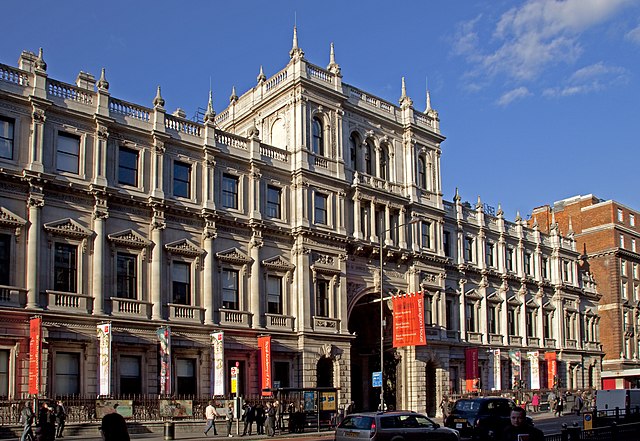George Bentham was an English botanist, described by the weed botanist Duane Isely as "the premier systematic botanist of the nineteenth century". Born into a distinguished family, he initially studied law, but had a fascination with botany from an early age, which he soon pursued, becoming president of the Linnaean Society in 1861, and a fellow of the Royal Society in 1862. He was the author of a number of important botanical works, particularly flora. He is best known for his taxonomic classification of plants in collaboration with Joseph Dalton Hooker, his Genera Plantarum (1862–1883). He died in London in 1884.
George Bentham
Benthamiella patagonica, one of several plants named in Bentham's honour
Linnean Society of London
The Linnean Society of London is a learned society dedicated to the study and dissemination of information concerning natural history, evolution, and taxonomy. It possesses several important biological specimen, manuscript and literature collections, and publishes academic journals and books on plant and animal biology. The society also awards a number of prestigious medals and prizes.
Burlington House: the Linnean Society occupies the range to the left of, and above, the entrance arch.
The society's premises in Burlington House seen from within the courtyard.
The first admission of women as fellows of the society in 1905, Emma Louisa Turner is on the far left, Lilian J. Veley is shown signing the membership book, whilst Lady Crisp receives the 'hand of Fellowship' from the president, William Abbott Herdman, behind Lilian J. Veley and standing is Constance Sladen – from a painting by James Sant (1820–1916)
The library of the Linnean Society, Burlington House






